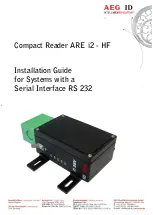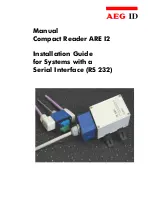
22
ASUS PCI-SIU2 User’s Manual
8
System startup
The newly installed SCSI bus is now ready to power up. Switch on
peripheral and host computer system power. The system monitor should
display the following information, but may vary, based on the system
BIOS manufacturer.
•
The normal Power-On Self Test and memory test procedure.
•
The host adapter sign on message including a list of attached SCSI
devices.
The list should match the peripheral devices attached to the bus. In most
cases the host computer system is now configured and ready for use.
Some situations will require that a low-level format be performed us-
ing the host adapter SmartSCSI Setup Utility to initialize a SCSI disk
drive and lay the foundation for a bootable SCSI drive.
9
SmartSCSI Setup Utility
The SmartSCSI Setup Utility simplifies the SCSI installation process
by eliminating the need for opening the system to change system jump-
ers and switch settings. All necessary host adapter functions are ac-
cessible through the utility, simplifying customization for your system
needs. ASUS’s SmartSCSI Setup Utility is divided into five segments
identified by: Scan Bus; Device Setup; Adapter Setup; BIOS Setup;
and Disk Utility. These program functions are accessible by typing
<CTRL><I> at the boot-up prompt when the message comes to view.
Hard Disk Drive Preparation
A new SCSI disk drive is normally low-level formatted at the factory to sim-
plify installation. Every SCSI hard disk drive must be physically low-level
formatted, partitioned, and logically formatted before it can be used to store
data. SCSI hard disks are physically low-level formatted at the factory and do
not usually need to be formatted again.
If you connect a newer SCSI hard disk drive to your SCSI card, you must
partition and logically format the drive. For DOS and Windows (3.x and 95)
use the DOS Fdisk and Format commands (see your computer, DOS, and
Windows documentation). For other operating systems, see your operating
system documentation.
If you are booting from a SCSI hard disk drive, make sure the Hard Disk (or
Drives) setting in your computer’s CMOS setup program is set to None or No
Drives Installed, as is required for SCSI hard disk drives. See your computer
documentation for details.
3. Hardware Installation
















































